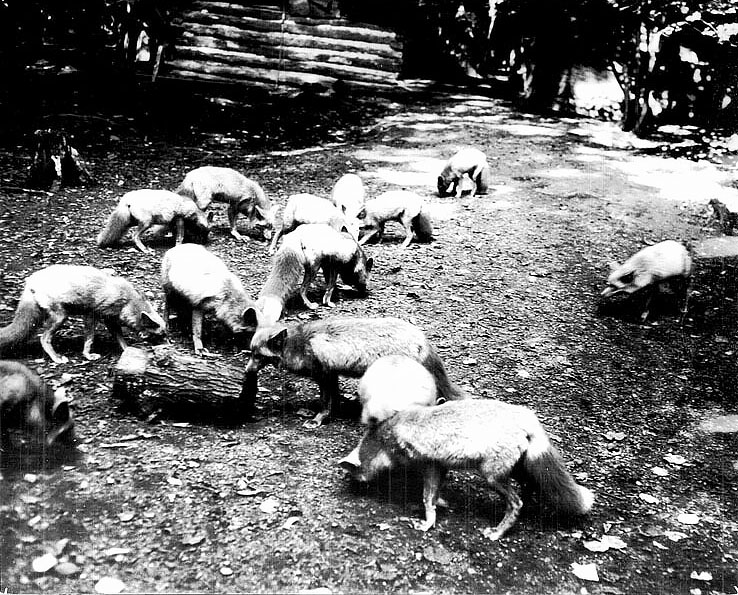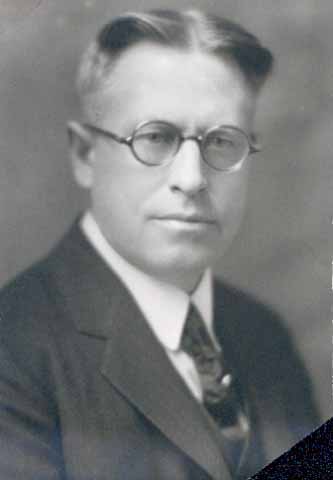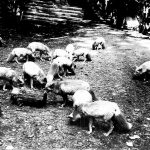One of the most formidable problems that fur farmers faced in in the early twentieth century were the epidemic diseases that would strike their herds each year. Many fur farmers had come to see losses to distemper and other diseases as a normal part of doing business. The Fromm brothers of Hamburg, Wisconsin, balked at the idea that nothing could be done. After searching widely for solutions, the Fromms eventually invested in a scientific study that would find the brothers playing a central role in the creation of a vaccine for canine distemper.
Distemper is a viral disease related to human measles, but that affects gastrointestinal, respiratory tracts, and nervous systems of a wide range of animals, including dogs, foxes, ferrets, and raccoons. For fur farmers, distemper was among the biggest threats to a herd of animals. Large, prosperous farms could be completely lost to the disease in a single year.

For the Fromms, the threat of distemper and other epidemics grew with their success. Within the span of only five years between 1920 and 1925, the brothers went from sending just 10 fox pelts to auction, to sending over 3,700. At their height in the late 1930s, the Fromm fox population reached 36,000, with a similar number of mink as well. As their ranges were filled with more and more animals, disease outbreaks became more common and more costly.

In 1924, the Fromms reached out to Dr. Robert Green, a scientist at the University of Minnesota who was starting to conduct research on fox diseases. The Fromms offered to fund his research and to provide herds of foxes on which test new treatments. Dr. Green went to work isolating the distemper virus and attempted to create a serum that would vaccinate the foxes against the disease. As with other immunizations, Green’s vaccine sought to infect the foxes with a weakened version of the virus that would stimulate immunity without sickening or killing the animals.
The Fromm employees were particularly unhappy with the arrangement, however. They well knew of the dangers of distemper and other diseases, and of the potential miracle Green’s research might produce. But it was a logistical nightmare to administer the treatments to whole herds in their pelting ranges. Worst of all, Dr. Green’s serums never seemed to actually save the herd for very long and frequently even killed all the foxes within hours of the injection.
The regular failures of Dr. Green’s experimental vaccines were extremely demoralizing for the fox keepers, and there was at least one instance in 1937 when the workers refused to continue the treatments altogether, resulting in a shouting match between the keepers and Green. In the end, however, the Fromms continued to back Green and his research.
After 15 long years of experimentation and frustration, the Fromm investment finally paid off. In 1939, Green’s 53 strain of the virus (which he named Fromm-D in honor of his patrons) finally had the desired effect. The success led to new opportunities for research, and Dr. Green and his team turned their efforts to developing a distemper vaccine for dogs. The operation expanded to become Fromm Laboratories Inc., a commercial medical venture which, by the 1940s, was doing $750,000 in annual business. The Fromm-D vaccine was a significant advance in veterinary medicine, and played a crucial role in the development of immunizations for dogs and cats.
Written by Ben Clark.
SOURCE
Kathrene Pinkerton, Bright With Silver (New York: William-Sloane Associates, Inc., 1947). Pinkerton also notes that some of the Fromms hoped compensate for disease losses by raising more animals, but it is unclear whether this was successful.
RELATED STORIES

Fashion and Fur

The Fromm Brand and the Hamburg Fur Auction

The Fromm Fur Farm



